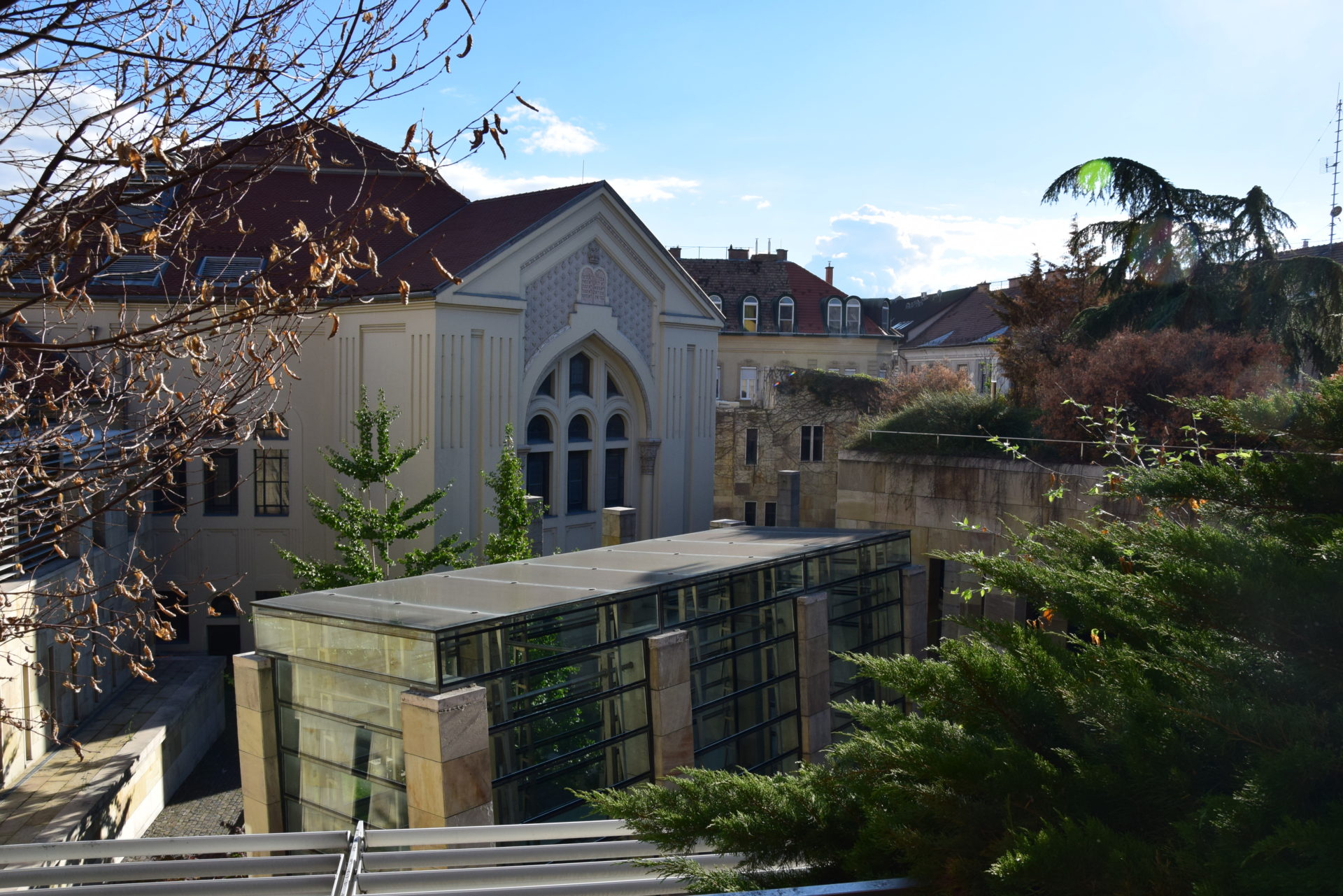Architects of the building complex:
István Mányi, Ybl award winning architect;
Attila Gáti, architect;
Szenes István, Ybl award winning interior designer;
Gergely László interior designer;
Péter Török, landscape architect;
The building received an award for construction in 2005 and an award for real estate development in 2006.
“Toward the street an archway, separated by a stone wall, has been erected, communicating outward protection, and inward underlining the eternity of the Memorial Wall. The emphasis is on evoking the silence.
In the mental power field that has shaped the building we examined analogies from the nature. In the power-struggle of tensioning blocks, the horizontal is not horizontal, neither the vertical, and perhaps even the gravity is suspended. The symbols of architecture suggest that everything here is beyond the normality, as the Holocaust itself is unexplainable within human history. The glass hall of the entrance leading to the permanent exhibition is also supported by tilted pillars. The inspiration from the nature came from Tuscany, where a line of pine trees took the same tilted form under the pressure of the permanent sea storms. I see the murdered as a symbol of thousands of years of constant struggle for survival, endurance, and wished to generate the same image to the visitors.
The roof garden also bears a symbolic significance, hovering as a vision above the horrors, seeking to connect to life. In the multitude of meaning of gardens, it is a memorial garden, addressing everybody’s better ego. “
Architect István Mányi

Galériák
| Név |
|---|
| Épületfotók nappal |